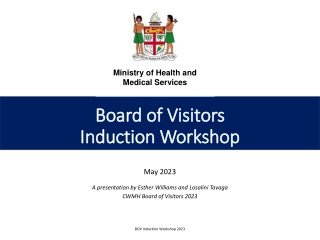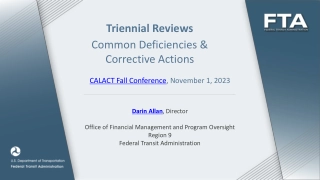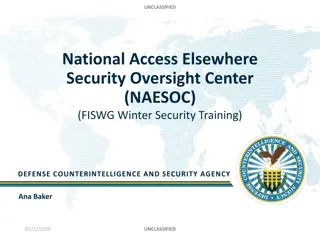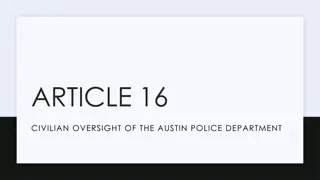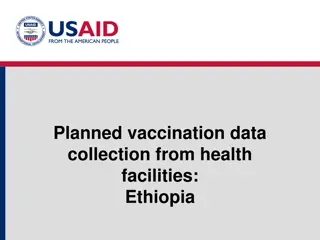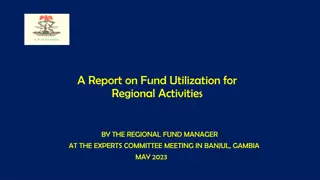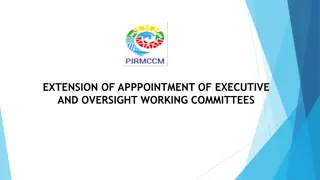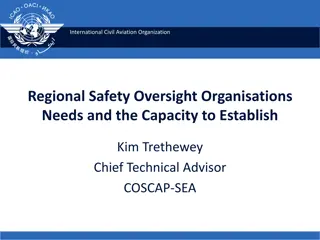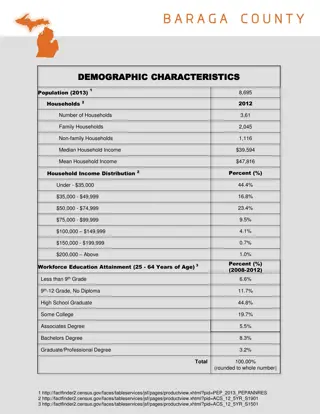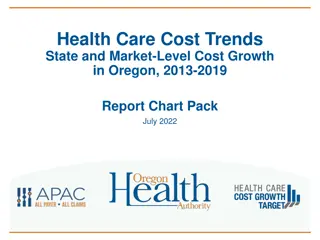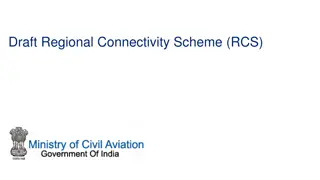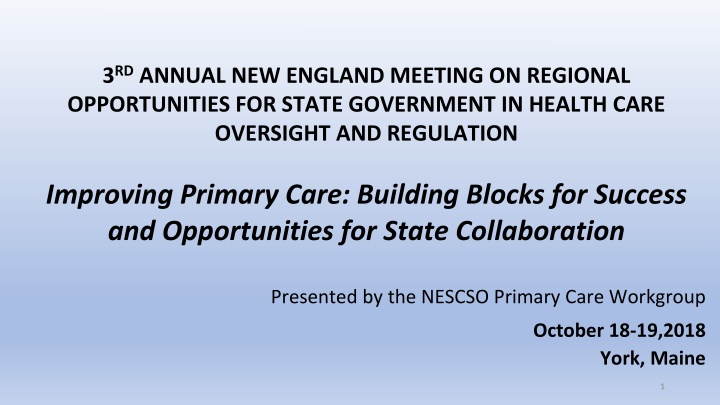
Regional Opportunities for State Government in Health Care Oversight
This content discusses the importance of primary care, investments in primary care providers, tools for determining investments, and collaboration opportunities among states. It also delves into defining primary care, primary care spending, and offers a link to a relevant study on measurement of primary care spending.
Download Presentation

Please find below an Image/Link to download the presentation.
The content on the website is provided AS IS for your information and personal use only. It may not be sold, licensed, or shared on other websites without obtaining consent from the author. If you encounter any issues during the download, it is possible that the publisher has removed the file from their server.
You are allowed to download the files provided on this website for personal or commercial use, subject to the condition that they are used lawfully. All files are the property of their respective owners.
The content on the website is provided AS IS for your information and personal use only. It may not be sold, licensed, or shared on other websites without obtaining consent from the author.
E N D
Presentation Transcript
3RDANNUAL NEW ENGLAND MEETING ON REGIONAL OPPORTUNITIES FOR STATE GOVERNMENT IN HEALTH CARE OVERSIGHT AND REGULATION Improving Primary Care: Building Blocks for Success and Opportunities for State Collaboration Presented by the NESCSO Primary Care Workgroup October 18-19,2018 York, Maine 1
Primary Care Workgroup Members Name State/Org Title David Auerbach MA Director of Research Rachel Block Milbank Memorial Fund Program Officer Sweya Gaddam MA Research Associate (HPC) Cory King RI Principal Policy Associate (OHIC) Michele Degree VT Health Policy Advisor (GMCB) Jenna Lupi CT Care Delivery Reform Specialist,(OHS) Elena Nicolella NESCSO Executive Director Mark Schaefer CT Director Healthcare Innovation, (OHS) Richard Slusky Slusky Consulting, LLC Facilitator Joshua Wojcik CT Assistant Comptroller 2
Discussion Points 1. Define Primary Care and Primary Care Spending 2. Why Should States Consider Increasing Investments in Primary Care Providers and Primary Care Practices? 3. Components of Primary Care Investments 4. Tools States Can Use to Determine Primary Care Investments 5. Measures of Success 6. Opportunities For Collaboration Among the States 7. Next Steps 3
Link to the Milbank Study on Measurement of Primary Care Spending Published July 2017 Work conducted under contract with Bailit Health Purchasing and subcontract with RAND https://www.milbank.org/ publications/standardizing -measurement- commercial-health-plan- primary-care-spending/ 4
How Do We Define Primary Care? Primary Care is: The provision of integrated, accessible health care services by clinicians who are accountable for addressing a large majority of personal health care needs, developing a sustained partnership with patients, and practicing in the context of family and community." Institute of Medicine, 1996 5
How Much of Our Health Care Dollars Go to Support Primary Care? If primary care is so important to society, do our collective payments reflect it? Defining primary care is harder than it first seems. Should we define it by the type of provider offering the service? The type of services available, regardless of provider? As quality improvement experts remind us, we improve what we measure. The United States is in the midst of an unprecedented era of provider payment reform. Assessing the effects of these innovations on a known contributor to high value care our primary care infrastructure should be a high priority. 1 1. Milbank Memorial Fund Report: Standardizing the Measurement of Commercial Health Plan Primary Care Spending by Michael H. Bailit, Mark W. Friedberg, and Margaret L. Houy (July 2017) 6
Why Should States Consider Increasing Payments to Primary Care Providers/Practices? There is near-unanimity that a truly reformed U.S. health care system will require at its foundation a robust system of primary care. Implementing increased investments in primary care through value-based payment reforms will result in primary care practices evolving over time toward the medical home ideal. Improving primary care is the key to better care, smarter spending, and healthier people and communities. 7
The Status of Primary Care Payments in Selected New England States Primary Care Total Payments as % of Total Medical Claims Primary Care Non-Claims- Based Payments Primary Care Claims- Based Payments Total Medical Payments State Source of Payments Year Connecticut State Employee Health Plan 2017 $1,485,422,512 $63,702,850 $5,749,504* 4.7% Massachusetts APCD (Top 3 Commercial Payers) 2015 $10,024,456,211 $665,795,472 --------- 6.6% Rhode Island Fully Insured Commercial Claims Paid (Largest Payers) Oct. 2016 $636,173,241 $38,716,942 $37,377,915 11.5% Vermont 2016 VHCURES All Payers 2016 $1,311,282,144 $127,036,478 -------- 9.69% *CT Includes Care Coordination and Shared Savings Quality Payments Only 8
Components of Primary Care Investments 1. Scope of Services a Primary Care Provider should provide 2. Who provides primary care services 3. Components of Primary Care Payments: Claims-based (CPT Codes) Non-Claims Based 4. Total Medical Payments -- The Denominator 5. Measures of Success 9
Scope Of Services A Primary Care Provider Should Provide Primary Care is: Integrated Accessible Accountable Majority of Care Partnership with Patients Context of Family and Community ACUTE CARE COORDINATION OF CARE CHRONIC CARE EDUCATION AND SCREENING PREVENTIVE CARE 10
Who Provides Primary Care? Family Practice Internal Medicine Geriatrics Pediatrics Nurse Practitioner (Primary Care) Physician Assistant (Primary Care) Others (For Consideration) Gynecologists Primary Mental Health Provider Naturopath Homeopath Health Care Providers Specializing in Primary Care Include: Definitions from Vermont Primary Care Payment Workgroup 12/29/2015 11
Components of Primary Care Spending Claims-Based Payments Non Claims-Based Payments Primary care services Performed by specialists Capitation payments and provider salaries Risk-based payments Payments for primary care medical home or patient centered medical home recognition Payments for achievement of quality/cost-savings goals Payments to develop capacity to improve care for a defined population of patients, such as patients with chronic conditions Payments to help providers adopt health information technology, such as electronic health records Payments or expenses for supplemental staff such as practice coaches, patient educators, patient navigators or nurse care managers Services provided by primary care providers Primary care services Non-primary care services performed by primary care providers The sum of spending for selected CPT codes and non claims-based payments to primary care providers becomes the numerator in the spending calculation. 12
How Can States Collect Information on Non- Claims Based Payments? Can States Require Commercial Payers to Report Non Claims- Based Payments? (See Rhode Island Standards) Can the States APCD be Configured to Reliably Collect Non Claims-Based Payments? Can Non Claims-Based Payments be Collected From Medicaid, Medicare and Self- Insured Organizations? 13
Total Medical Payments The Denominator Categories of Services to be Considered in the Calculation of the Denominator Include Payments to: Rhode Island includes the Following: Hospitals Physician Services Dental Services Other Professional Home Health Care Drugs and Supplies Vision and DME Skilled Nursing Care All payments made to RI facilities and providers regardless of where the member resides. This includes Rx, behavioral health, lab, and imaging services, inclusive of any secondary payments 14
How Can States Achieve Goals Regarding the Percent of Total Health Care Expenditures that are Allocated to Primary Care? Regulation (States Establish Rules and Measures of Accountability) Voluntary Participation of All Payers (Need A Critical Mass of Payers) Commercial Fully Insured/Self Insured Medicaid Medicare Advantage Medicare Next Gen Models Demonstration Projects State Specific Contracts with CMMI Certificate of Need Standards Insurance Regulations Legislation Health Dept. Regulations Other 15
Rhode Islands Approach to Increasing Primary Care Spending and Supporting Primary Care Infrastructure Standard One Increase the proportion of primary care investments by one percentage point per year for five years. Standard Two Require insurers to support an expansion of the medical home initiative based on the chronic care model. Standard Three Insurers must Implement an incentive program for physicians to adopt electronic health records. Standard Four - Insurers must transition to DRGs & APCs for hospital services, incorporate quality incentives into their hospital contracts, and cap the annual rate increases that insurers can grant hospitals to the average percentage change in the Medicare IPPS plus 1 percent. In 2009 the RI Office of the Health Insurance Commissioner began a process to strengthen and expand primary care in the state by rapidly increasing funding for primary care services through the promulgation of Affordability Standards 16
Connecticut: Primary Care Modernization Design a new model for primary care to: Expand and diversify care teams Expand patient care and support outside of the traditional office visit Double investment in primary care over five years through more flexible payments Reduce trend in total cost of care Foundational Assumptions for designing model: Eligibility limited to practices in Advanced Networks/ACOs/FQHCs Multi-payer Existing MSSP or other shared savings arrangements remain in place, but model introduces downside risk (may propose program adjustments) Hybrid, partial or full bundle for primary care services 17
Connecticut: Capabilities Under Consideration Diverse Care Teams Health Coaches, Nutritionists Care Coordinators, Community Health Workers, Navigators Pharmacists, Nurses Alternative Modes of Support & Engagement Phone/Text/e-mail Telemedicine Home Visits Technology Patient generated data & Remote patient monitoring Precision & Genomic Medicine E-Consults Integration and Specialization Practice Specialization (e.g., geriatrics, chronic pain) Behavioral Health Integration Community Integration 18
Connecticut: Payment Reform Model Options Under Consideration Basic Bundle Fee for Service Payments Supplemental Bundle MSSP or Other Shared Savings or Downside Model Risk Puts Pressure on Total Cost of Care Options: Hybrid basic bundle (partial bundle with reduced fees for office visits) Combined bundle (single upfront payment that combines basic and supplemental bundles) 19
Massachusetts Health Policy Commissions Policy and Research Work to Advance Primary Care Investment The vision of the HPC s care delivery transformation is that providers and payers are patient- centered and accountable for high-value care across a patient s medical, behavioral, and health-related social needs. PCMH certification The HPC sets all-payer care delivery standards for patient-centered primary care in the Commonwealth, with a particular focus on behavioral health integration capabilities. The HPC also provides technical assistance at no cost to primary care practices to work on PCMH capabilities. ACO certification The HPC sets all-payer care delivery standards for ACOs in the Commonwealth. Massachusetts Medicaid requires all ACOs (both commercial and Mass Health) to be certified in order to participate in their DSRIP program. Patient-centered primary care is a foundational standard for ACO. The program also has standards around how funds flow from the ACO to participating providers, including primary care. Research Mandatory reporting of PCP rosters of nearly all provider groups Analysis of primary care-based provider system variation in spending and potentially avoidable utilization (e.g. low-value care, avoidable ED use). Analysis and tracking of usage of alternative payment models among primary-care-based provider system in the Commonwealth
Vermonts Work to Advance Primary Care Investments ACO Budget Review Blueprint for Health (PCMH) Access to primary care is a foundational goal embedded in the All-Payer Model Agreement between the State of Vermont and CMMI Multi-payer PCMH program launched in 2008 Nearly every primary care practice in the state participates PMPM payments to advanced primary care practices (NCQA recognition required), with incentive payments based on community-wide quality performance Multi-payer regional community health teams support primary care practices across the state ACO investments are primary care centered (18 V.S.A. 9551): PMPMs (Basic/PCMH, Complex Care Coordination, Independent Primary Care) VBIF 70% of earnings returned to attributing primary care providers, 30% to specialists within the network 2019 will serve as a test year for evaluating primary care spending within the ACO
Vermont Vermont PCMH and CHT Payments under Blueprint for Health PCMH and CHT Payments under Blueprint for Health PCMH and CHT Payments under Blueprint for Health $25,000,000 $20,000,000 $15,000,000 $10,000,000 $5,000,000 $0 2008 2009 2010 2011 2012 2013 2014 2015 2016 2017 PCMH Core CHT Year 2008 2009 2010 2011 2012 2013 2014 2015 2016 2017 Ave # PCMH 6 7 13 51 93 115 124 126 128 135
Broad Messages There is variation among payers broader use of the measures will help explain why Measurement resources are required, need to plan for it insurer side, state side It is important to have a process that is transparent and data that is trusted It is feasible to develop and use primary care spending measures It is important to measure primary care investment 9/24/2018 Slide 23
Building a Movement - Next Steps Collaborating with primary care specialty societies and researchers on refining definitions Sponsoring additional research using measures to establish Medicare FFS spending levels Connecting with national organizations developing and using measures (e.g., HCCI report includes primary care spending measure) Working with states to replicate PC spend measures, legislation and regulation including support for NESCSO convening Disseminating these results at professional meetings (e.g. PCPCC) Milbank Continues to Partner with State and National Groups to Advance this Agenda. This Includes: 9/24/2018 Slide 24
What are Some Potential Measures to Ensure that Investments in Primary Care are Producing the Desired Results (ROI)? Reductions in avoidable usage of services (ER, hospital admissions lab and imaging ) Improvement in Patient Satisfaction Scores (Access, wait times, provider attentiveness, etc. Reduction of health risk to the population and the rates of chronic conditions Reduction in costs and/or reduced increase in total cost of care Adherence to Community- Based Needs Assessments and/or State Health Plans Reductions in avoidable use of high end services for chronic care patients Increased use of preventive care services 25
Opportunities for Collaboration States Might Consider Develop Common Definitions for: Primary care services Primary care providers CPT Codes to include in the calculation of payments Define the Denominator Collaborate to reconsider regulatory approaches (CON, Budget Review, Insurance Regulations) or other means to ensure accountability Agree on measures of success related to the increased investments such as cost reduction, improved access, improved quality, and impact on population health Define the data needed to support the measures of success and determine how that data will be collected and reported 26
Appendix Primary Care CPT Codes Draft For Comment Only 27
Examples of Claims-Based Payments (CPT Codes) that States Included for the Calculation of Primary Care Payments States Need to Agree on Which Primary Care CPT Codes Should be Included in the Calculation of Payments to Primary Care Providers See Appendix Slides 29-33 for a Comparative List of CPT Codes that States are Currently Including in their Calculations 28
Primary Care CPT Codes Currently Being Used for Calculation of Primary Care Payments CT. State Employee Plan Analysis Vermont ACO Primary Care Spend 2018 Primary Care Spending Report Oregon Rhode Island Milbank Report [1] Procedure Codes Description Mass. Office Type Visits 98966 Non-physician telephone services No No Yes No No Yes 98967 Non-physician telephone services No No Yes No No Yes 98968 Non-physician telephone services No No Yes No No Yes Online assessment, mgmt. services by non- physician 98969 No No Yes No No Yes 99201-99205 Office or outpatient visit for a new patient Office or outpatient visit for an established patient Office or other outpatient consultations Yes Yes Yes Yes Yes Yes 99211-99215 Yes Yes Yes Yes Yes Yes 99241-99245 Home/NH Visits No No Yes Yes Yes Yes Domiciliary or rest home multidisciplinary care planning 99339-99340 No No No Yes No 99324-99328, 99334- 99337 99304-99310, 99315- 99316, 99318 99341-99345 Domiciliary or rest home Custodial Care No No No Yes No No Nursing Facility Care No No No Yes No No Home visit for a new patient No No Yes Yes Yes Yes 99347-99350 Home visit for an established patient No No Yes Yes Yes Yes 99354-99355 99358, 99359 Prolonged Service Office Visit Prolonged Service Office Visit No No Yes No No No Yes Yes No No No No 29 1. Milbank Memorial Fund, Standardizing the Measurement of Commercial Health Plan Primary Care Spending , Michael Bailit, Mark Friedberg, Margaret Houy, July 2017
Primary Care CPT Codes Currently Being Used for Calculation of Primary Care Payments CT. State Employee Plan Analysis Vermont ACO Primary Care Spend 2018 Primary Care Spending Report Oregon Milbank Report [1] Procedure Codes Description Mass. Rhode Island Preventive Visits 99381-99385 99386-99387 99391-99395 99396-99397 Preventive medicine initial evaluation Initial preventive medicine evaluation Preventive medicine periodic reevaluation Periodic preventive medicine reevaluation Preventive medicine counseling and/or risk reduction intervention Yes Yes Yes Yes Yes Yes Yes Yes Yes Yes Yes Yes Yes Yes Yes Yes Yes Yes Yes Yes Yes Yes Yes Yes 99401-99404 Yes No Yes Yes Yes Yes Smoking and tobacco use cessation counseling visit (Alcohol/Sustance Abuse Screenng) 99406-99409 No No Yes Yes No Yes Group preventive medicine counseling and/or risk reduction intervention Administration and interpretation of health risk assessments Unlisted preventive medicine service 99411-99412 Yes No Yes Yes Yes Yes 99420 Yes No Yes Yes Yes Yes 99429 Yes No Yes Yes Yes Yes 99442 Telephone calls for patient mgmt. No No Yes No Yes 99444 Non-face-to-face on-line Medical Evaluation No No Yes No Yes 99495-99496 1. Milbank Memorial Fund, Standardizing the Measurement of Commercial Health Plan Primary Care Spending , Michael Bailit, Mark Friedberg, Margaret Houy, July 2017 Transitional care management service No Yes Yes Yes Yes Yes 30
Primary Care CPT Codes Currently Being Used for Calculation of Primary Care Payments CT. State Employee Plan Analysis Vermont ACO Primary Care Spend 2018 Primary Care Spending Report Oregon Milbank Report [1] Procedure Codes Description Mass. Rhode Island Medicare Visits G0008-G0009 Administration of influenza virus vaccine No No Yes Yes No Yes G0402 G0438-G0439 G0444 G0463 G0502-G0507 T1015 Welcome to Medicare visit Annual wellness visit Annual depression screening Hospital Outpatient Clinic Visit (Medicare) Care management Clinic visit, all-inclusive(FQHC) No Yes No No No No No No No No No No Yes Yes Yes Yes Yes Yes Yes Yes Yes Yes No No No No Yes Yes Yes No Yes Yes Yes Yes 99487,99489,99490, G0506 Chronic Care Management No No Yes Yes No No 1. Milbank Memorial Fund, Standardizing the Measurement of Commercial Health Plan Primary Care Spending , Michael Bailit, Mark Friedberg, Margaret Houy, July 2017 31
Primary Care CPT Codes Currently Being Used for Calculation of Primary Care Payments CT. State Employee Plan Analysis Vermont ACO Primary Care Spend 2018 Primary Care Spending Report Oregon Milbank Report [1] Procedure Codes Description Mass. Rhode Island Immunizations and Injections Immunization through age 18, including provider consult 90460-90461 No No Yes Yes No Yes 90471-90474 Immunization by injection/oral/intranasal route No No Yes Yes No Yes 90649 90658 90670 Human Papilloma virus vaccine Influenza virus vaccine Pneumococcal conjugate vaccine No No No No No No Yes Yes Yes No No No No No No Yes Yes Yes Yes 90686 Influenza virus vaccine No No No No Yes 90688 90715 Influenza virus vaccine Tetanus, diphtheria toxoids adsorbed No No No No Yes Yes No No No No Yes Yes 90732 Pneumococcal polysaccharide vaccine No No Yes No No Yes 90736 Zoster (shingles) vaccine No No Yes No No Yes 96372 Therapeutic, prophylactic, or diagnostic injection No No Yes No No Yes 1. Milbank Memorial Fund, Standardizing the Measurement of Commercial Health Plan Primary Care Spending , Michael Bailit, Mark Friedberg, Margaret Houy, July 2017 32
Primary Care CPT Codes Currently Being Used for Calculation of Primary Care Payments CT. State Employee Plan Analysis Vermont ACO Primary Care Spend 2018 Primary Care Spending Report Oregon Milbank Report [1] Procedure Codes Description Mass. Rhode Island Obstetric Visits Routine obstetric care including vaginal delivery (global code) Yes 60% of payment 59400 No No No Yes No Routine obstetric care including VBAC delivery (global code) Routine obstetric care including attempted VBAC delivery (global code) Yes 60% of payment Yes 60% of payment 59610 No No No Yes No 59618 No No No Yes No 99460-99465 OB/GYN Evaluation and Management Services No No No Yes No No 1. Milbank Memorial Fund, Standardizing the Measurement of Commercial Health Plan Primary Care Spending , Michael Bailit, Mark Friedberg, Margaret Houy, July 2017 33
QUESTIONS/DISCUSSION Thank You 34

